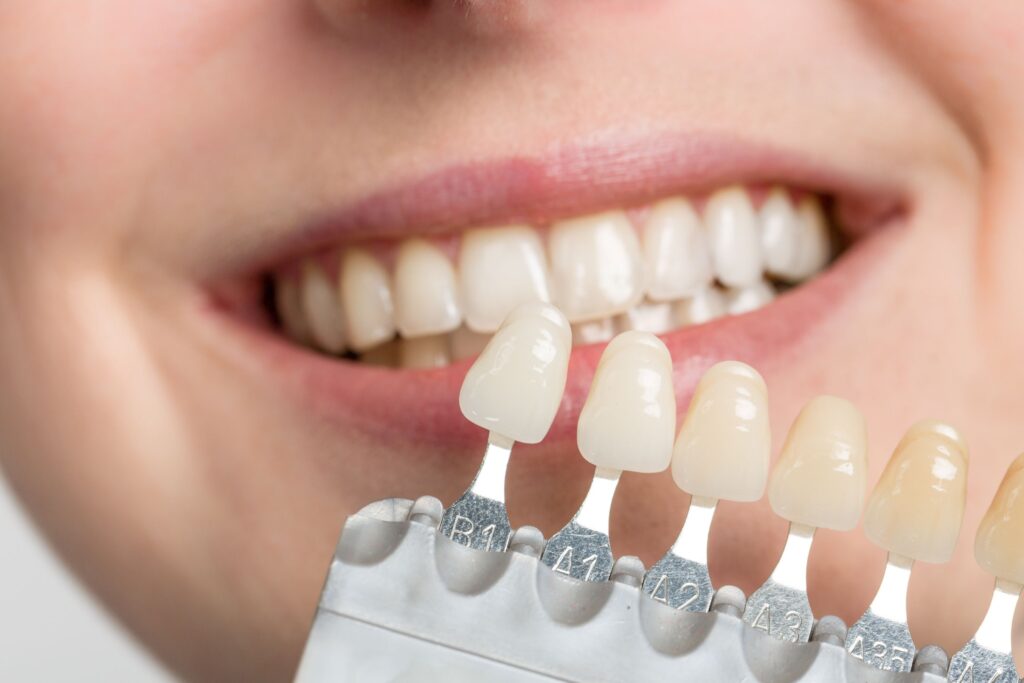
One of the first things people notice about you is the quality of your smile, and flaws in your teeth are easily noticeable. Many people with chipped, cracked, misshapen, or mildly crooked grins develop anxiety for fear of being judged or avoid spending time with others.
Fortunately, your dentist can provide veneers to perfect your grin and enhance your appearance. These thin shells are cemented to the front surface of your teeth to conceal one or more issues, but you might avoid treatment if you’re unsure how long they last. Continue reading to learn more about their longevity!
How Long Do Veneers Last?
Many patients are surprised to learn that veneers can be temporary or permanent. Furthermore, they can be made from different materials that impact their resilience and, therefore, their overall lifespan.
Below is more detailed information about the anticipated timeline of the different types and their typical expectancy:
Temporary Veneers
For these restorations to fit correctly, your dentist must remove a small amount of enamel from your teeth before making impressions to design the shells. This protective outer layer doesn’t regenerate, leaving your teeth somewhat more vulnerable to cavities, gum disease, and injuries.
Because it can take several weeks for the dental lab to create your prosthetics, your provider will likely place temporary veneers to protect your teeth until they arrive. Your short-term cosmetics aren’t meant to last long, so they’re made from acrylic or composite resin that is less costly, though less durable, than porcelain restorations. They usually only last a couple of weeks, or until your permanent ones arrive.
Composite Veneers
Your finished covers can be made either from composite resin or from durable ceramic, which is the more traditional method. The former is a mixture of tiny particles of glass, silica, and quartz that can be customized to match the shade, shape, and size of your natural teeth for seamless results. This material is less expensive than porcelain, making this treatment a more affordable option.
However, the material isn’t as resilient as porcelain and tends to chip and crack more easily. That means your veneers are more likely to require repairs or replacements sooner. They tend to last between 5 to 8 years, though they’re known to stick around for 10 or more if they’re cared for correctly.
Porcelain Veneers
The standard material used for veneers is an incredibly resilient ceramic that’s coated with a glaze durable enough to resist a certain amount of damage and discoloration. It can also be designed to resemble your natural pearly whites, and it reflects light like enamel for lifelike results. Once they’re bonded in place, they can last 10 to 15+ years if they’re well maintained.
Thankfully, cleaning your veneers is as easy as brushing and flossing twice daily and visiting your dentist every six months for a routine appointment!
Meet the Author
Dr. Jake enjoys helping people of all ages improve their lives by enhancing their dental condition. He earned his dental degree from the University of the Pacific Arthur A. Dugoni School of Dentistry before completing a one-year residency focusing on specialty topics like oral surgery, emergency dentistry, and prosthetic reconstructions. Today, he provides a comprehensive menu of world class services at one convenient location to meet all your family’s needs, including veneers. He’s happy to provide realistic restorations to improve your appearance. You can request a consultation on the website or call (559) 431-9104.
